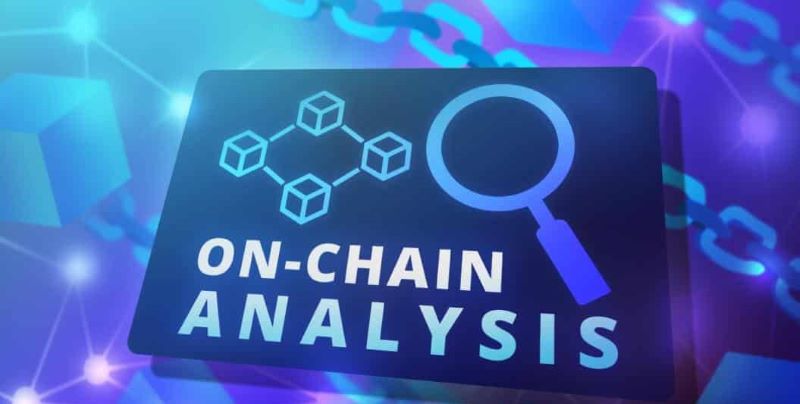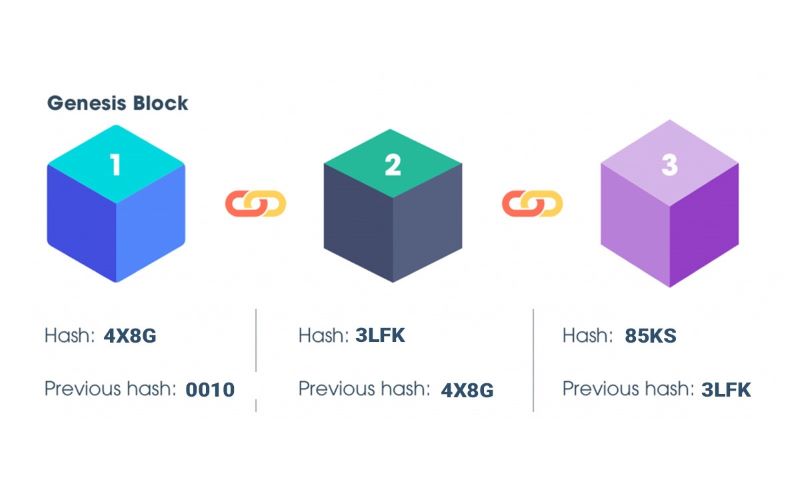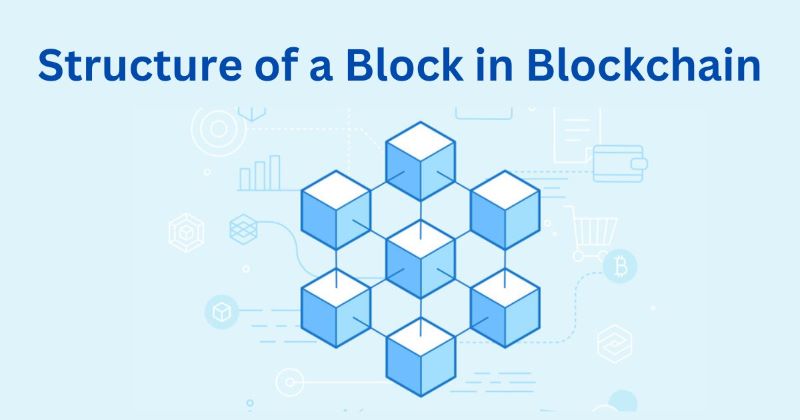Are you ready to dive deep into the crypto world? With on-chain data analysis instructions, you’ll crack open the door to the market’s secrets. Imagine having the power to see through the noise and pinpoint exactly where the value lies. That’s what on-chain analysis offers. It’s not just about looking; it’s about truly seeing. From the basics to the advanced, I’ve got you covered. You’ll find out how to pick apart blockchain transactions, make sense of smart contract activity, and even translate wallet addresses into actionable insights. Fasten your seat belt, because we’ll go beyond typical market charts to command a treasure trove of data. Get ready to become a crypto sleuth—the insights you seek are just one careful analysis away.
Grasping the Basics of On-Chain Analysis
The Essentials of On-Chain Analysis Tutorial
Welcome to your first steps in on-chain analysis. I’ll guide you through the nuts and bolts. Let’s start with a simple question: What is on-chain analysis? It is a way to peek into the heart of a blockchain. You analyze every transaction that ever happened. This helps you grasp the health and activity of a cryptocurrency. It’s like being a detective in the digital currency world.
An on-chain analysis tutorial starts with learning metrics. Metrics are just fancy ways to say ‘measures’. We look at how much crypto gets traded. We see who sends it and who gets it. We also check how often these trades happen. This tells us about the coin’s popularity and trust.
To learn on-chain metrics, you first pick a blockchain. You could start with Bitcoin or Ethereum. Both have lots of data to practice on. Once you pick a blockchain, you look into its ledger. A ledger is a record book of all the trades. It tracks the journey of every coin. It shows where it started and where it went. Smart people made tools to check all this info easily. This way, you can keep up with the real-time action too.
Remember, always stay sharp and focus on facts. Good detectives don’t make wild guesses. They look at clues and follow where they lead.
Identifying Quality On-Chain Data Sources
Now, let’s talk about finding good on-chain data. Quality data is key. It’s like having a map that guides you to treasure. Bad data? It’s like a map leading you off a cliff. Not fun.
Start with blockchain explorers. These are websites that let you see into a blockchain’s heart. They show you all the trades as they happen. They’re a bit like social media for coins. But instead of pictures, you get numbers and facts.
There are also special tools for blockchain data analytics. These tools sort through the numbers. They put everything in order. They help you see patterns that others miss. It’s like having a super lens for data spotting.
To be sure you’ve got the best tools, you check reviews. Other users tell you if a tool is worth your time. It’s like asking a friend for good movie advice. They won’t steer you wrong.
With these tools, you can start to analyze blockchain flow patterns. That means you watch how the crypto moves from place to place. It’s like watching busy bees in a beehive. Only these bees are bits of code moving money.
Learn to look for big moves of coin. These might tell you something big is about to happen. Maybe good news is coming, or maybe it’s trouble. Either way, you want to know first. That’s your ticket to smart decisions in the crypto world.
As you get comfy with these basics, you’ll be ready to tackle the deeper dives. Keep learning, stay curious, and soon you’ll be the go-to person for crypto secrets. So grab your best detective hat, and let’s solve some crypto mysteries together!
Deep Dive into Blockchain Transaction Examination
Analyzing Smart Contract Activity Tracking & On-Chain Volume Interpretation
When you check smart contracts, you’re like a detective. You look deep into what each contract does. This is smart contract activity tracking. Think of it as checking what rules a contract follows and when it acts. This gives us clues on the health of a coin or a project. Always ask, “How active are these contracts?” More activity often means a healthier project.
Next, we look at how much crypto moves on the network. This is on-chain volume interpretation. Knowing this helps us see if a coin is getting more or less popular. Big volumes can mean a coin is hot. But if the number drops, traders might be losing interest.
Insights into Wallet Address Scrutiny & Transaction Ledger Investigation
Now, let’s talk about digging into wallet addresses. This is wallet address scrutiny. Every wallet has a story. Some hold a lot for a long time – they’re like whales in the sea of crypto. Others move money fast. By watching these wallets, you get hints about who’s controlling the market.
Last comes the transaction ledger investigation. This is like going back in time to see every move on a coin’s network. It’s a history book of crypto. By reading it, you learn from the past to guess the future.
There you have it, your map to the treasure of on-chain data. Remember, these are just starting points. But they’re mighty powerful. Keep digging, and you’ll find even more. The secrets of the crypto market are yours if you know where to look.
Advanced On-Chain Metrics and Interpreting Techniques
Unpacking On-Chain vs Off-Chain Analysis & Interpreting Blockchain Statistics
Let’s dig deep. On-chain data lives right on the blockchain. It’s like a book that never lies. We look at all moves made with crypto, big and small. This shows us who’s buying, who’s selling, and how much it’s all worth. But it goes beyond just numbers. It’s about seeing the whole story of every coin and token out there.
Off-chain is different. It’s like the secret whispers in the crypto world. These are trades and moves not written on the blockchain but still affect it. Think private deals or trading on exchanges. Together, they paint the full picture of the crypto market’s heartbeats.
We dive into statistics with a sharp eye. They do more than just count. They help see how active a blockchain is, or if a coin is getting more love. Using charts and graphs, we spot trends. Like a detective, we figure out what these clues tell us about where money moves and why.
Mastering Blockchain Data Visualization Techniques & Extracting Value from On-Chain Data
Now, picture this – a map that guides you through a maze of numbers and facts. That’s what data visualization does for us in blockchain. We turn raw numbers into charts and pictures that tell stories. They make it easy to spot a big trade or a rush of activity.
Why do we care? Because seeing the patterns helps us make smart calls. Imagine knowing when a coin is about to get hot, or if a blockchain is slowing down. With these pictures, we can act fast, before others see it.
To get there, we learn the best ways to show our findings. Lines, bars, dots, and colors – they all help us find hidden gold in the data. When you know where to look, the value just jumps out.
We ask, “Where’s the money going?” and “What’s shaking up the prices?” Then, we dig for answers. We look at how many folks are using a currency and how fast it trades. These are clues we follow to figure out what might happen next.
Our tools are top-notch, like detectives’ kits, but for blockchain. They help us dig up the secrets of every coin move. And with that, we bring light to the shadows of crypto markets, showing you the path to follow.
In this high-tech treasure hunt, on-chain data is our map. And we are the savvy explorers, using it to sniff out the next big find. With every block and transaction, we inch closer to uncovering the riddles of the crypto universe. And it all starts with mastering these critical tools and techniques.
Applying On-Chain Analysis to Crypto-Economic Decisions
On-Chain Indicators for Investors & Analyzing Consensus Mechanism Impacts
You must know what drives your coin. It’s not just guesswork! On-chain analysis tells us lot. We look at blockchain data to spot trends. We see what’s happening with smart contracts and tokens. It’s like being a detective but for crypto money!
Smart contracts are rules written in code. They help with trades, loans, and more. We check these to see how busy the blockchain is. More action can mean more value. It tells us what’s hot and what’s not.
Token movement is also key. It shows who’s buying or selling. We can learn who has the power in the market. Addresses with heaps of tokens? They’re the whales. We watch them closely because their moves can shift prices.
The consensus mechanism is the agreement system for blockchains. It keeps the books right and the network safe. Proof of work, like in Bitcoin, uses lots of power. Proof of stake, like in Ethereum 2.0, locks up coins for network health. We look at data from these to guess how well a coin might do.
Here’s how it helps you. If a coin is changing to proof of stake, it might shoot up in value. Why? Because it’s seen as good and green. Plus, people who stake get rewards. Who doesn’t like rewards?
Correlating On-Chain Data with Market Cycles & Historical On-Chain Data Research
Market cycles can be a roller coaster. We use history to predict the future better. We dig through old data to find patterns. When coins go up, why do they? When they fall, what’s the cause? We pin this to events, like big buys or news.
Gas fees are tiny costs to do things on the blockchain. They can tell us when people do more on the blockchain. High fees can mean a busy network or a problem. We look at these to feel the market mood. If fees are low, it might be quiet, or tech got better.
We also match on-chain actions with price changes. This helps you choose when to buy or sell. It’s a tough game, but with good data, you can play it smart. Understanding cycles gives you a power-up in this game.
Historical data is not just old news. It breathes life into our guesses for tomorrow. We check how coins behaved before. We ask, “Will history repeat, or is this time different?” The more we learn, the better we can guide you.
In summary, apply on-chain analysis to make wiser choices. Use blockchain clues to understand coin stories. And always, always keep an eye on the past. It’s the map to the treasure we call future gains!
In this post, we’ve navigated the complex world of on-chain analysis, starting with the basics like understanding key concepts and pinpointing reliable data sources. Then, we dug into blockchain transaction analysis, exploring smart contract activity and dissecting ledger transactions. We upped the ante with advanced metrics, contrasting on-chain and off-chain analysis, and learning to visually represent this data. Finally, we linked our findings to real-world crypto-economy decisions, interpreting market cycles and historical data.
My final thought: On-chain analysis is a powerful tool. With practice, it unlocks deep insights into blockchain activities, aiding smarter investment choices. Keep this guide handy, and let the data lead your next move in the crypto space.
Q&A :
What is on-chain data analysis and how can it benefit cryptocurrency investors?
On-chain data analysis involves examining and interpreting the vast amount of data that is recorded on a blockchain. It’s beneficial to cryptocurrency investors because it provides insights on transaction volumes, wallet addresses, token movements, and overall network activity. This kind of analysis can help investors make more informed decisions by understanding the actual economic activity on the blockchain, identifying trends, and detecting early signals of market shifts.
How can I get started with on-chain data analysis?
To get started with on-chain data analysis, you’ll need to have access to blockchain data. This can generally be done through blockchain explorers or specialized data analytics platforms. One should familiarize themselves with basic blockchain concepts and metrics such as transaction volume, active addresses, gas fees, and network hashrate. Beginners can take advantage of various tutorials, online courses, and forums related to blockchain technology and on-chain data analysis.
Are there tools available for on-chain data analysis?
Yes, there are several tools available for on-chain data analysis. These can range from free blockchain explorers like Etherscan and Blockchain.com to more advanced analytics platforms like Glassnode, Coin Metrics, or Blockchair. Each tool comes with its own set of features and capabilities, including visualization tools, APIs, and customizable dashboards to help users interpret on-chain data for investment or research purposes.
Can on-chain data analysis predict cryptocurrency prices?
While on-chain data analysis can provide valuable insights into the health and activities of a blockchain network, it is not a foolproof method for predicting cryptocurrency prices. Various other factors, such as market sentiment, external economic events, and regulatory news, also significantly impact cryptocurrency prices. However, on-chain data can highlight trends and patterns that might indirectly inform price predictions.
Why is understanding on-chain data important for the blockchain industry?
Understanding on-chain data is crucial for the blockchain industry because it reflects the real-time state of the network. Analysts, developers, and users can use this data to evaluate the adoption rate of a cryptocurrency, gauge the security and health of the network, and determine the utility of a blockchain. For developers, it’s particularly useful for improving network protocols and for building more user-friendly decentralized applications (DApps).




RELATED POSTS
Decentralized Learning Unchained: Navigating the Blockchain Education Revolution
"How do decentralized learning platforms...
Pebonk Kombat – The next frontier in gaming and crypto
Pebonk Kombat is revolutionizing gaming...
Future of Blockchain Technology in 2030 – Prospects and Potential Applications
The future of blockchain technology...
Liquid Native Restaking: Unlocking new potential in Ethereum staking
Liquid Native Restaking is emerging...
Advantages of Blockchain: Unpacking the Future of Secure Transactions
Enhancing security and trust in...
Mining Cryptocurrency how to? How to read trading charts cryptocurrency?
When venturing into the world...
Blackwing Airdrop – HOT Opportunity to Receive Tokens from BXP
In the fast-moving cryptocurrency space,...
Blockchain Showdown: Layer 1 vs Layer 2 Unraveled
Enhance transaction throughput with blockchain...
Blockchain Technology Applications – 3 Key Highlights in the economy
Blockchain Technology Applications are increasingly...
MicroStrategy Short Squeeze: Opportunities in the Crypto
The MicroStrategy short squeeze is...
Unveiling the Future: How DAOs Revolutionize Learning and Teaching
Discover how DAOs are transforming...
What are the different types of blockchain: Unveiling Its Varied Forms
Discover the different types of...
Blockchain Simplified: Unlocking the Secrets Behind Digital Ledgers
"Demystifying Blockchain: An Introductory Guide...
Student Data Portability: How Blockchain Revolutionizes Academic Credentials
Empower students with data ownership...
Interledger Protocol Unveiled: The Future of Seamless Payments?
What is Interledger Protocol? Unraveling...
What is a honeypot in Crypto? Unveiling the Deceptive Traps!
What Is a Honeypot in...